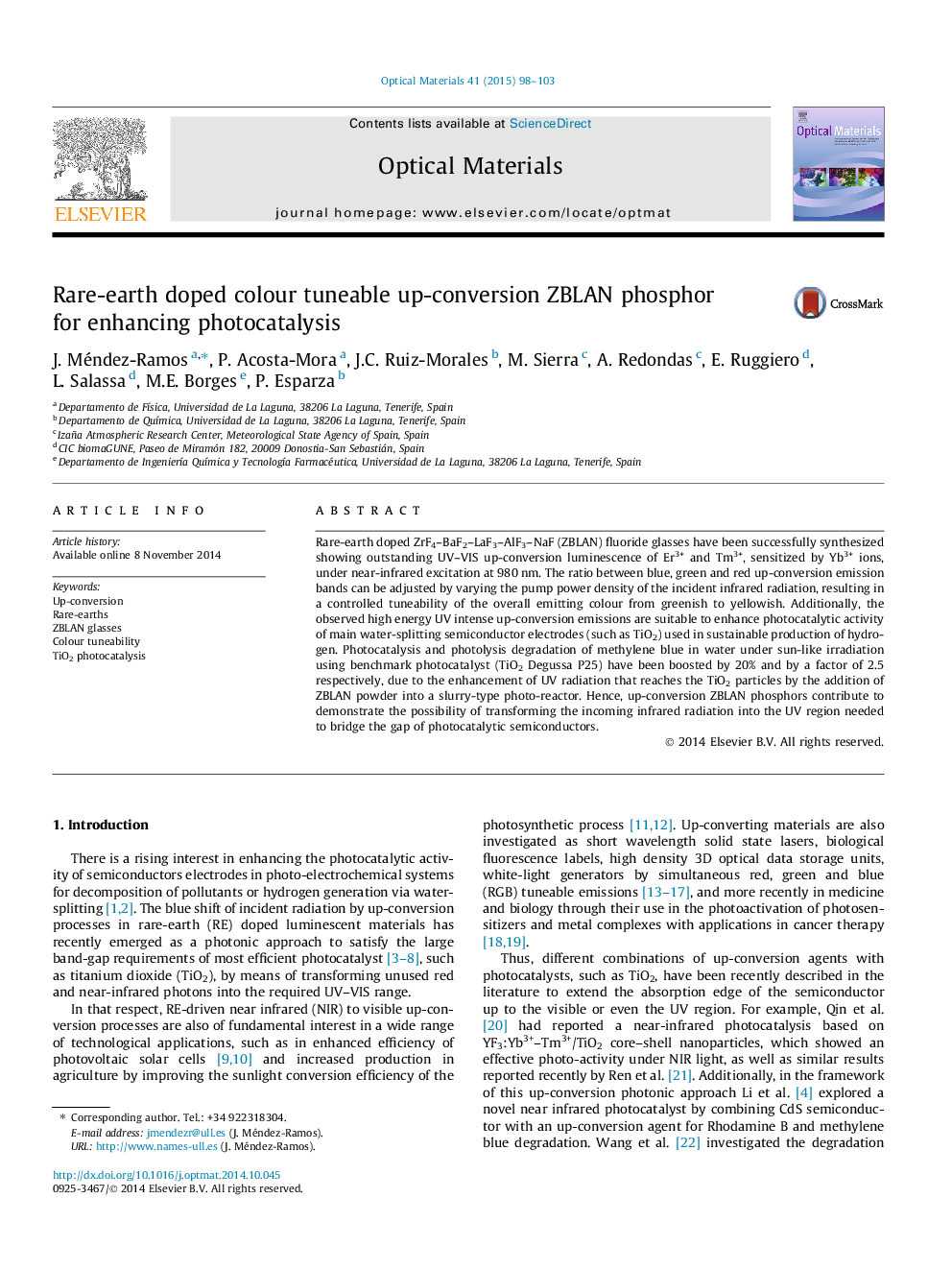| Article ID | Journal | Published Year | Pages | File Type |
|---|---|---|---|---|
| 1493651 | Optical Materials | 2015 | 6 Pages |
•Successful synthesis of heavy rare-earth Yb3+–Er3+–Tm3+ doped ZBLAN fluoride glass.•Colour tuneable up-conversion emission by changing pump power density is observed.•Enhancement of photocatalytic activity of TiO2 by UV up-conversion ZBLAN emission.
Rare-earth doped ZrF4–BaF2–LaF3–AlF3–NaF (ZBLAN) fluoride glasses have been successfully synthesized showing outstanding UV–VIS up-conversion luminescence of Er3+ and Tm3+, sensitized by Yb3+ ions, under near-infrared excitation at 980 nm. The ratio between blue, green and red up-conversion emission bands can be adjusted by varying the pump power density of the incident infrared radiation, resulting in a controlled tuneability of the overall emitting colour from greenish to yellowish. Additionally, the observed high energy UV intense up-conversion emissions are suitable to enhance photocatalytic activity of main water-splitting semiconductor electrodes (such as TiO2) used in sustainable production of hydrogen. Photocatalysis and photolysis degradation of methylene blue in water under sun-like irradiation using benchmark photocatalyst (TiO2 Degussa P25) have been boosted by 20% and by a factor of 2.5 respectively, due to the enhancement of UV radiation that reaches the TiO2 particles by the addition of ZBLAN powder into a slurry-type photo-reactor. Hence, up-conversion ZBLAN phosphors contribute to demonstrate the possibility of transforming the incoming infrared radiation into the UV region needed to bridge the gap of photocatalytic semiconductors.
